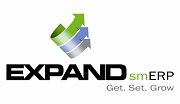 Enterprise Resource Planning system has a
long history which stretches way back to the 1950s. It has evolved drastically
over the last 50-60 years to cope with the changing demands of people in
various departments of business. Technology was not a very friendly face in the
1960s. Thus, the very idea of software was unknown to most people. The earlier
systems were based on automation for individual functions like financial
account or inventory management. Reasonable growth of the Enterprise
Information System could be detected. We
see that as technology develops, people’s demands keep on changing. It becomes
more progressive. This led to the formation of ERP.
Enterprise Resource Planning system has a
long history which stretches way back to the 1950s. It has evolved drastically
over the last 50-60 years to cope with the changing demands of people in
various departments of business. Technology was not a very friendly face in the
1960s. Thus, the very idea of software was unknown to most people. The earlier
systems were based on automation for individual functions like financial
account or inventory management. Reasonable growth of the Enterprise
Information System could be detected. We
see that as technology develops, people’s demands keep on changing. It becomes
more progressive. This led to the formation of ERP.
The process of a more efficient method for
maintaining records was started by the Manufacturing industry. ERP is born out of
Manufacturing Requirements Planning (MRP). The initial MRP solutions were
extremely costly. They required a large number of personnel to support the
mainframe computers on which they run. The ERP system functions extended beyond
the internal use of an individual’s manufacturing firm. The benefits of the
system were soon recognised by the people. By the 1970s when computers became a
more common face this system became popular. MRP utilizes software applications
for scheduling the production processes. It generates schedules for the
operations and purchase of raw materials based on the production requirements
of finished goods, the structure of the production system, the current
inventories levels and the lot sizing procedure for each operation. It tapped
into the master production schedule and allowed businesses to plan the parts
and product requirements.
The 1980s saw a new and more refined system
in the form of MRP II. It was a more accessible tool. This software coordinated
materials and production requirements extending services to:
- The shop floor
- Finance
- Human Resource
- Engineering
- Project Management
- Distribution Management
MRP II was made more universal. The purpose
behind the new additions made was to make the software more user friendly with
more than one approach to business.
The 1990s experienced an explosive growth of
technology. It marks the advent of ERP which was an extended version of MRP II.
Multi-module application software for improving the performance of the internal
business processes was used. It includes application modules supporting
marketing, finance, accounting and human resources. It uses a single database
for storing all the data that keeps the process running smoothly, thereby
ensuring visibility, accessibility and consistency.
Today the growth of ERP systems is
phenomenon. It can be used in all forms- computers, laptops, cell phones,
clouds and analytics. It is no longer outside the budget of small firms. It has
been adopted universally. It covers
every aspect of business. The extended ERP systems include- Customer
Relationship Management (CRM), Supply Chain Management and Advance Planning and
Scheduling. The evolution is indeed remarkable.
Contributor: Sidhanth

No comments:
Post a Comment
Thank you for your Comments.
ExpandERP Team